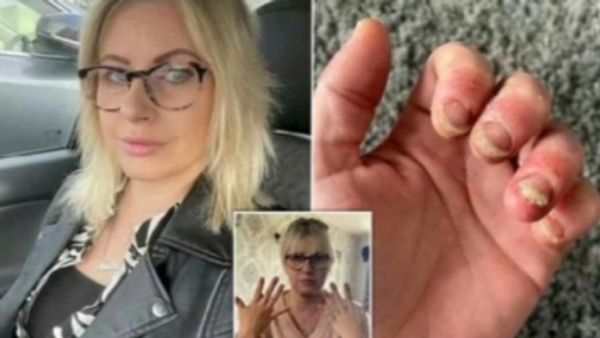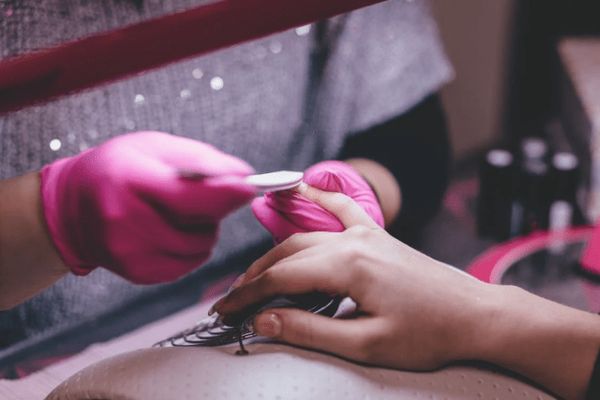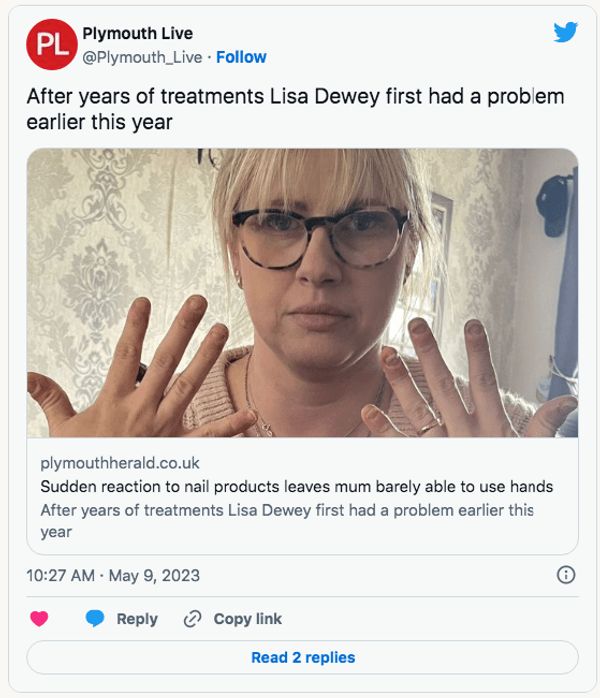
As we age, it’s important to take extra care of our bodies, and that includes our hands. For many of us, getting our nails done is a regular part of our self-care routine. But what if this seemingly harmless activity could actually harm us?
Meet Lisa Dewey, a 36-year-old mother from Pattishall, Northamptonshire, who had been getting gel manicures for years without any problems. However, after a routine appointment in February, she started experiencing unusual symptoms. Her fingers became irritated, her nails were loosening, and one finger even turned purple. Concerned, Lisa sought medical help and was diagnosed with a bacterial infection by her doctor. Little did she know that this was just the beginning of her ordeal.
Following the incident, Lisa realized that her issues were connected to her gel manicures. She suspected she had developed an allergic reaction to a specific ingredient in the gel nail polish. And she’s not alone. The British Association of Dermatologists has issued a warning about the increasing number of allergic reactions associated with gel and acrylic nails.
The problem arises when the UV light used to cure the gel polish is not applied for a sufficient duration. This can cause the release of harmful chemicals, such as methacrylates, which can be absorbed by the skin. The result? Skin rashes, nails detaching from the nail bed, and in severe cases, even breathing difficulties. People affected by this may develop a long-lasting sensitivity to these compounds, known as “life-long sensitization.”
Lisa’s symptoms have had a significant impact on her daily life. Simple tasks like washing her daughter’s hair or fastening a seatbelt have become excruciatingly painful. Even wearing gloves doesn’t provide relief, as sweaty hands worsen the symptoms. The condition has also affected her self-confidence, leading her to hide her hands from others.
In order to prioritize her well-being, Lisa has made the difficult decision to stop using nail products altogether. She also wants to raise awareness about the risks associated with gel manicures. Lisa explains, “Some people can go years without any issues, and then suddenly experience a painful reaction. It’s important to be aware that even salon nail treatments can pose a risk if the technician is not adequately trained.”
So, how can we protect ourselves and still enjoy beautiful nails? It’s crucial to ensure that the UV lamps used during the curing process are used for the recommended duration. Each brand of gel polish has a specific curing time, usually ranging from 30 seconds to 90 seconds. Rushing through the process can trigger an allergic reaction and long-lasting sensitization.
Let’s heed Lisa’s warning and take a closer look at our nail care routines. It’s always better to be safe than sorry, especially when it comes to our health.







